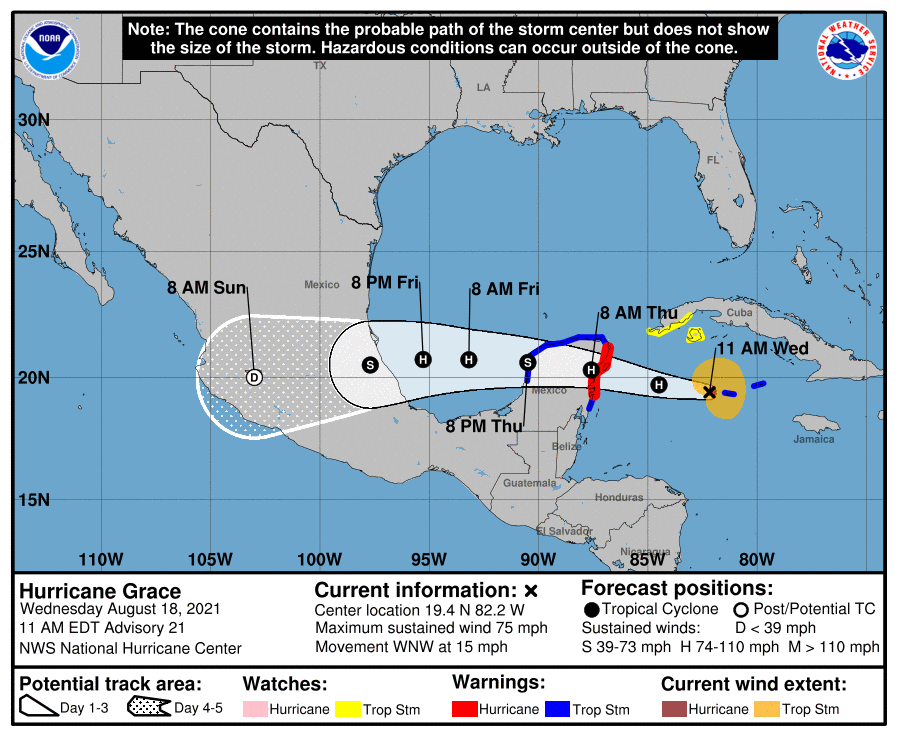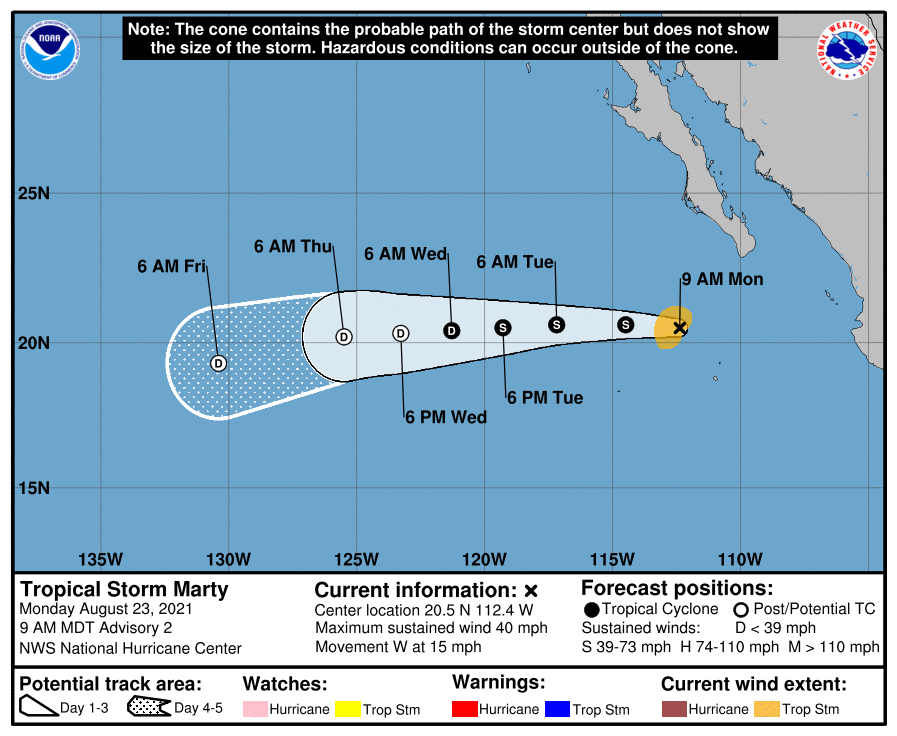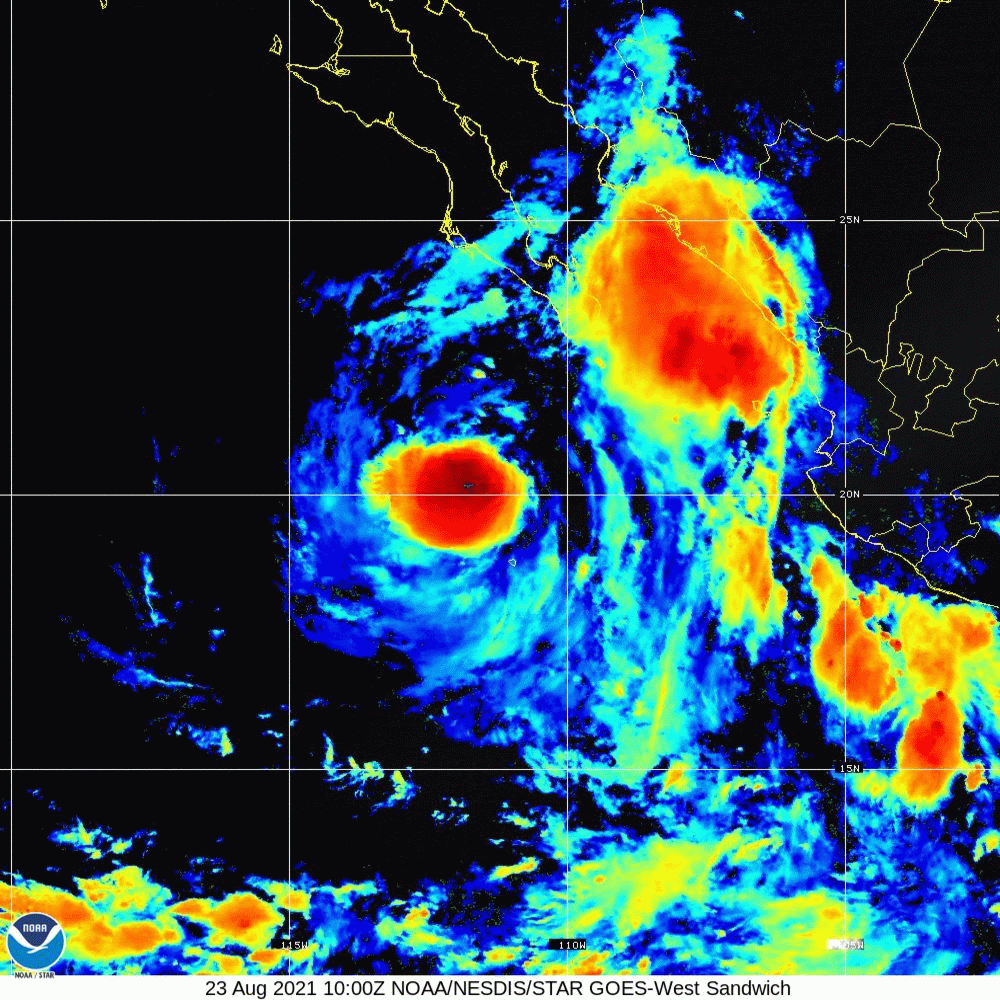This is not an article about a person who decided to switch genders — although the argument for switching genders and recognizing any gender beyond male and female has historically been controversial.
Grace Becomes Marty.
No, this article is about one tropical system which now has a second name: Grace — which was once a hurricane in the Atlantic basin earlier this month…

…is now officially Tropical Storm Marty in the eastern Pacific Ocean basin after crossing the Yucatan Peninsula.

The storm has passed to the north of Socorro Island and is heading west at 15 miles per hour. Although the maximum sustained winds of Tropical Storm Marty are 40 miles per hour, it is not expected to strengthen to hurricane status during the remainder of its existence.
The one thankful difference is that Tropical Storm Marty is expected to remain over the open waters of the Pacific Ocean and not affect any coastal areas, islands, or land masses; and therefore, no travel alerts have been issued and no travel waivers are currently being offered by any commercial airlines.
Final Boarding Call
“This storm has an increasing chance of being one of those tropical systems whose name will change if it emerges off of the west coast of Mexico as a tropical system” is what I wrote in this last article at The Gate pertaining to Hurricane Grace. “In my opinion, it should keep the name of Grace and not potentially change to Marty or possibly Nora.”
Certain anomalies of the naming of tropical storms and hurricanes have always been a pet peeve of mine. In addition to the same storm keeping its original given name regardless of where it is located, I also I personally believe that the National Weather Service of the United States and other official weather authorities should consider using the letters Q, U, X, Y, and Z to name tropical systems in the Atlantic Ocean basin — especially with the inclusion of names which are not common in the United States. Quincy, Ursula, Xavier, Yvonne, and Zachary all come immediately to my mind to name storms which usually do not require those letters during a typical season.
Tropical storms and hurricanes which are named in the eastern Pacific Ocean basin already use every letter except for Q and U; and tropical storms and hurricanes which are named in the central Pacific Ocean basin do use the letter U but not B, C, D, F, G, J, Q, R, S, T, V, X, Y, and Z.
At least members of the Hurricane Committee of the World Meteorological Organization have decided earlier this year that names using the Greek alphabet will not be used in the future because it creates a distraction from the communication of hazard and storm warnings and is potentially confusing — so at least they are open to some changes…
…but according to this Wikipedia article pertaining to what are apparently known as Atlantic–Pacific crossover hurricanes — and at least 19 of them have reportedly existed since 1842 — prior to the year 2000, “storms were renamed after crossing from the Gulf of Mexico into the Eastern Pacific. At the 22nd hurricane committee in 2000 it was decided that tropical cyclones that moved from the Atlantic to the Eastern Pacific basin and vice versa would no longer be renamed. Hurricane Otto in 2016 was the first storm to cross from one basin to another to apply under this rule.” I intend to better verify this claim.
I guess because Grace weakened to a tropical depression and then remnants prior to strengthening to become Tropical Storm Marty, the name did not carry over after all?
Then again — on second thought — Marty has been used in the past as the name of female human beings; so perhaps switching genders was never a topic here after all…
Source: The National Oceanic and Atmospheric Administration of the Department of Commerce of the United States.

